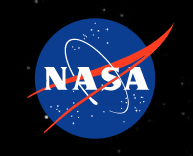
There are several great websites that document the exploration of space. One can only imagine that over the next few decades this area will expand at exponential growth. There will likely be many impressive technological advancements that are born from humanity's space evolution. We appear to be at the begining of a new space age. This time there are new dymanics and goals. There are so many branches of space exploration and study that specailized areas are breaking into their own large studies in the broder topic of Space.
Simply dropping into one of these space based sites can be a daunting task because of how many projects and interesting items can be found within the website. I would like to highlight a few of these websites and the deeper pages that provide better detail on some key projects or topics of research.
Before the websites, I would like to provide several of the other interesting references and peple in this area.
European Space Agency Channel - YouTube↗
PBS - Space Time Channel - YouTube↗
Anton Petrov Channel - YouTube↗
Star Stuff Channel (Dylan O'Donnell) - YouTube↗
Solar System Distance Calculator↗
James Webb Space Telescope Countdown Clock↗
Now, for the websites...the first website is an obvious place to start. (click on the graphic or links)
1. The original NASA website has a plethora of references and resources gathered from the NASA missions and long time history and expertise in Earth's solar system.
nasa.com↗
2. The Cassini missions overview is an excellent starting resource to gather first hand sourced information and data. The website provides some incredible pictures taken by Cassini's two cameras of Saturn. Unfortunately, Cassini ended its mission in September of 2017.The Cassini mission was a collaboration between NASA, ESA (the European Space Agency) and the Italian Space Agency. The mission was managed by the Jet Propulsion Laboratory based out of California Institute of Technology in Pasadena, California.
solarsystem.nasa.gov/missions/cassini/overview/↗
3. Deep Impact is a collection from NASA that provides images and data from the spacecraft's comet impact on July 4th, 2005. Deep Impact was the 8th comet mission but the first to make impact with its impact probe (separate from spacecraft). The spacecraft was solar powered. The spacecraft's camera (high-resolution instrument) was one of the largest space instruments ever assembled.

solarsystem.nasa.gov/missions/deep-impact-epoxi/in-depth/↗
4. The Hubble Space Telescope was one of the largest and most versatile space telescopes. The mission has run over 30+ years and provided multiple discoveries and images. One interesting fact is that Hubble's camera has always taken pictures in grayscale (similar to black and white). These photos can later be processed for post-colorization. There are so many fascinating discoveries and images prodocued from Hubble telescope it is well worth the visit and browsing of their site.

hubblesite.org↗
5. The InSight Mars Lander is a project that is providing many new discoveriers of the Martian environment and landscapes. The dedicated website provides much of data, study results, videos and images created by the InSight Lander. You may also notice there is an InSight Podcast that will keep you updated on any new discoveries from the InSight Lander.
nasa.gov/mission_pages/insight/main/index.html↗
6. The Juno mission is unlocking some of the greatest mysteries of Earth's solar system with a focus on Jupiter and its many moons. NASA's Jovian orbiter has helped scientists bring understand the gaseous giant planet and what forces are at play with the volatile atmosphere. This site is packed with incredible photographs and information related to the Juno mission.
![]()
https://www.missionjuno.swri.edu/↗
7. The Kepler and K2 website walks through some of the more fascinating discoveries coming from the Kepler and K2 missions. The main goal of Kepler was determined to be a mission that analyzed the structure and seeked to categorize the plantary systems from local solar systems and from other parts of the unvierse. Kepler is has an incredible work ethic and efficiency. Case in point, the Kepler Mission has continiously monitored and analyzed more than 200,000 stars over the course of its like. Not to mention that Kepler has helped disover and validate more than 4,500+ exoplanets.
nasa.gov/kepler/discoveries↗
8. New Horizons website documents the mission with data, informatin, videos, and images. Namely, New Horizons brought us back the incredible images from Pluto. It also helped determine the atmosphere and geographic makeup for the pant for the first time in human history on July 14th, 2015.
nasa.gov/mission_pages/newhorizons/main/index.html↗
Other sites of note:
European Southern Observatory - Extremely Large Telescope (ELT)↗
California Institute of Technology - Jet Propulsion Laboratory↗





